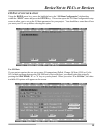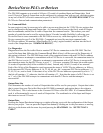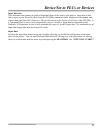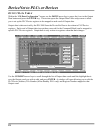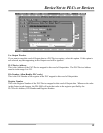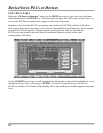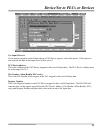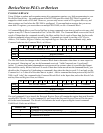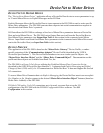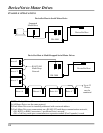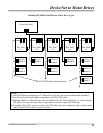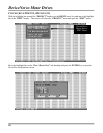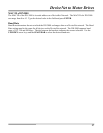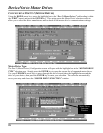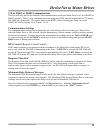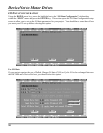
DeviceNet to Motor Drives
23
DEVICENET TO MOTOR DRIVES
The ”DeviceNet to Motor Drives” application allows a DeviceNet Host device to access parameters in up
to 32 serial Motor Drives via Explicit Messages and/or I/O Data.
Explicit Messages allows the DeviceNet Host to issue requests to the DN-3000 to read or write specific
Motor Drive parameters. The DN-3000 converts those requests into serial communications requests in
the selected serial Motor Drive’s protocol.
I/O Data allows the DN-3000 to exchange a fixed set of Motor Drive parameters between a DeviceNet
Host and serial Motor Drives. The DN-3000 writes Output Data received from the DeviceNet Host to
fixed Motor Drive parameters (see Output Data Table in this section) in the connected serial Motor
Drives. Input Data is read from fixed Motor Drive parameters in the connected serial Motor Drives and
sent to the DeviceNet Host (see Input Data Table in this section).
DEVICE PROFILE
This application of the DN-3000 is based on the “Motor Drive Gateway” Device Profile, a vendor-
specific extension of the “Communications Adapter” Device Profile (described in the “ODVA
DeviceNet Specifications”). This Device Profile introduces two new vendor-specific Objects: the
“Motor Drive Interface Object” and the “Motor Drive Command Object”. Documentation on this
profile and these objects are available from Panel-Tec, Inc.
The DN-3000 is a Group 2 Only Server utilizing the Predifined Master/Slave Connection Set (as
described in the (ODVA DeviceNet Specifications”). It supports both Explicit Messaging and Polled,
Change-of-State (COS) and Cyclic I/O connections to a DeviceNet Host. It does not support Bit-Strobed
I/O connections.
To access Motor Drive Parameter data via Explicit Messaging, the DeviceNet Host must issue an explicit
Get_Member or Set_Member request to the desired “Motor Drive Interface Object” Instance (based on
Motor Drive Address) of the DN-3000.
If Polled, COS and/or Cyclic I/O connections are to be used, you must first set up the I/O
configuration of the DN-3000 with the DN3000 Configuration Editor software. See I/O
Configuration in this section.



